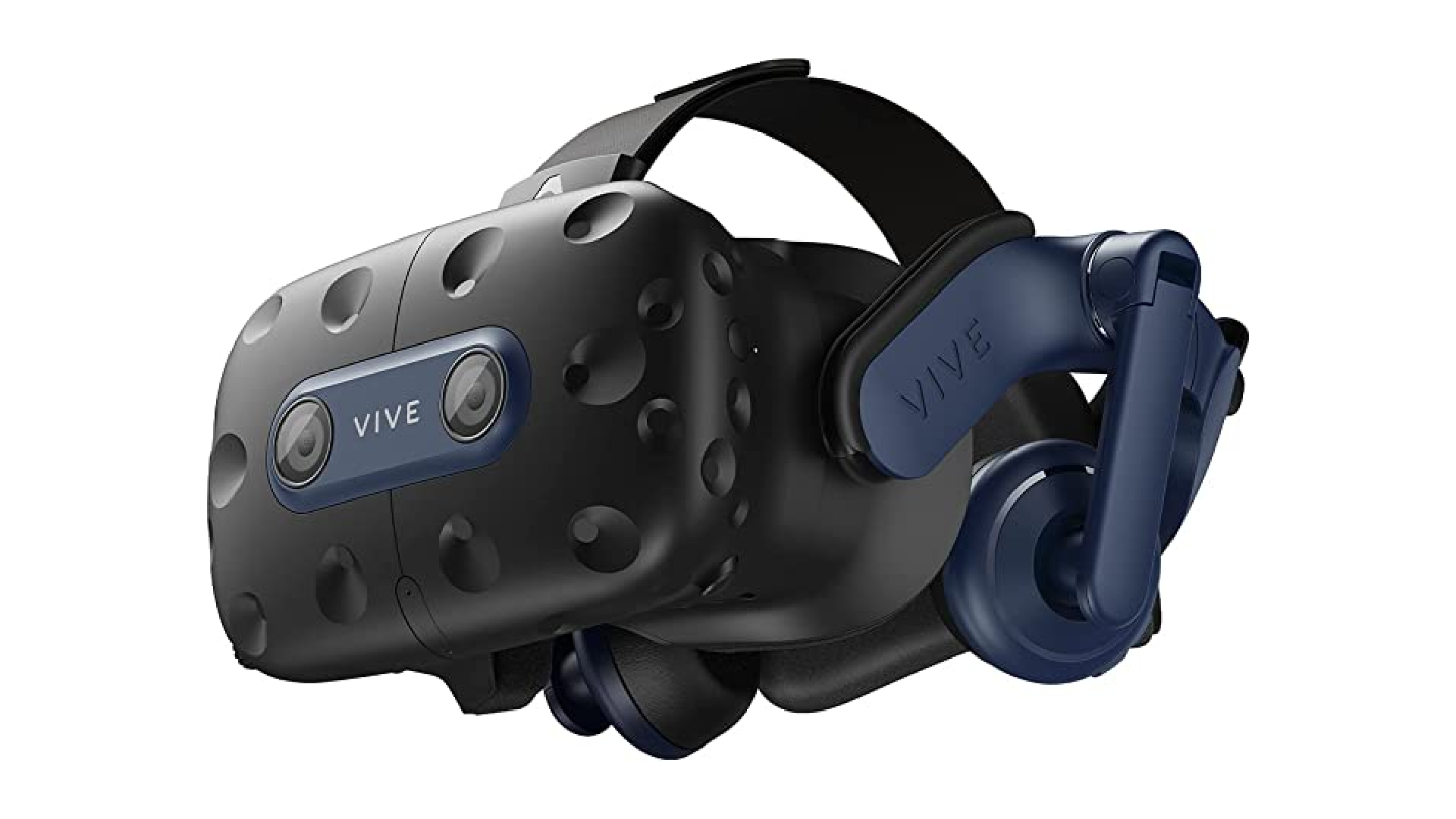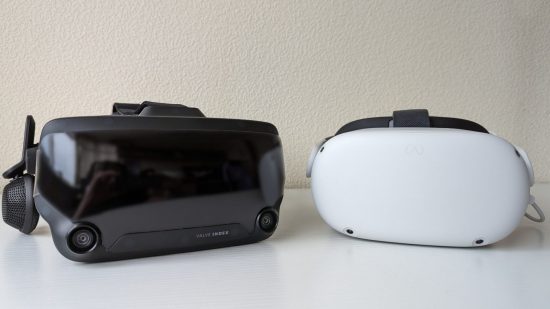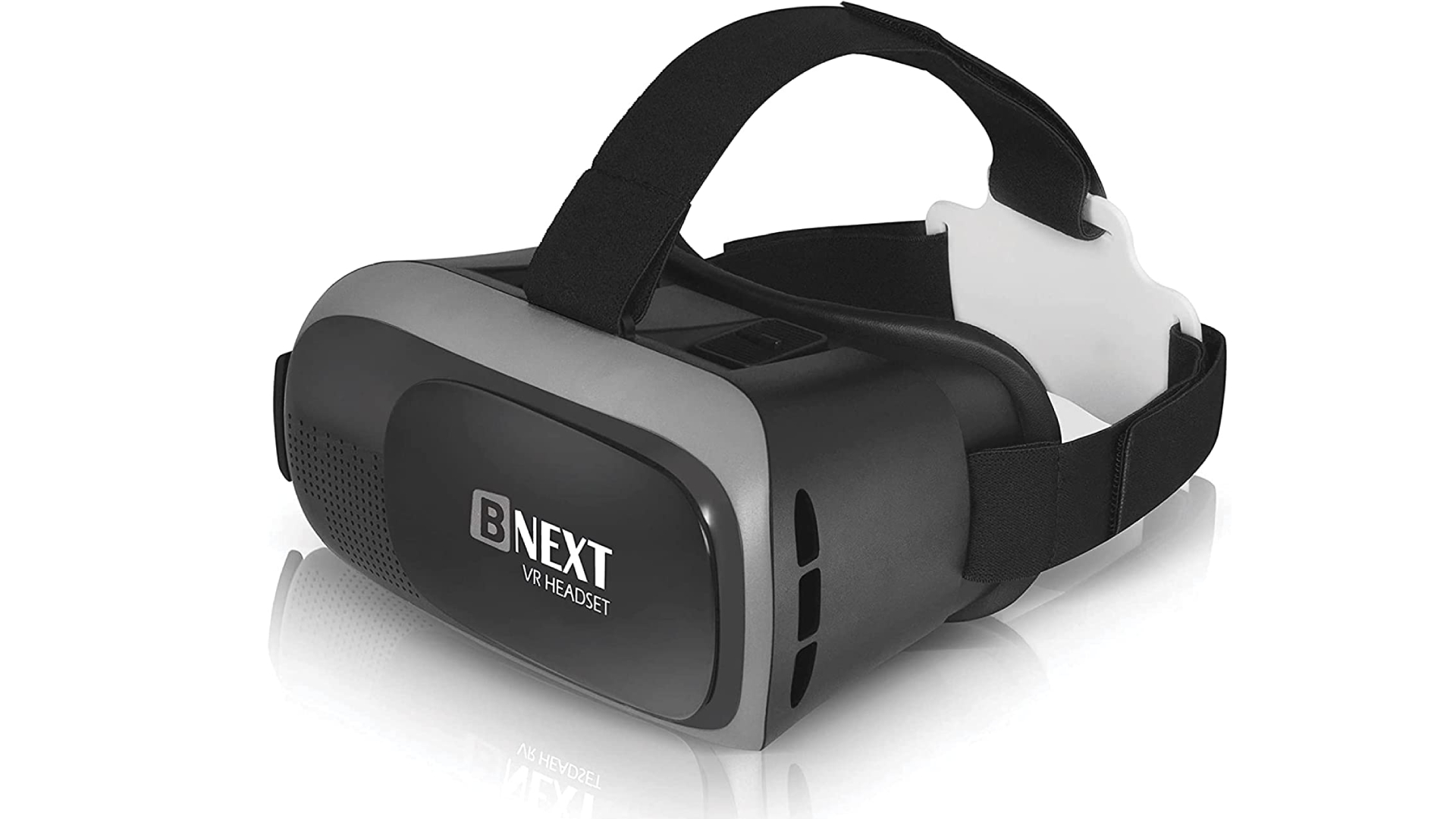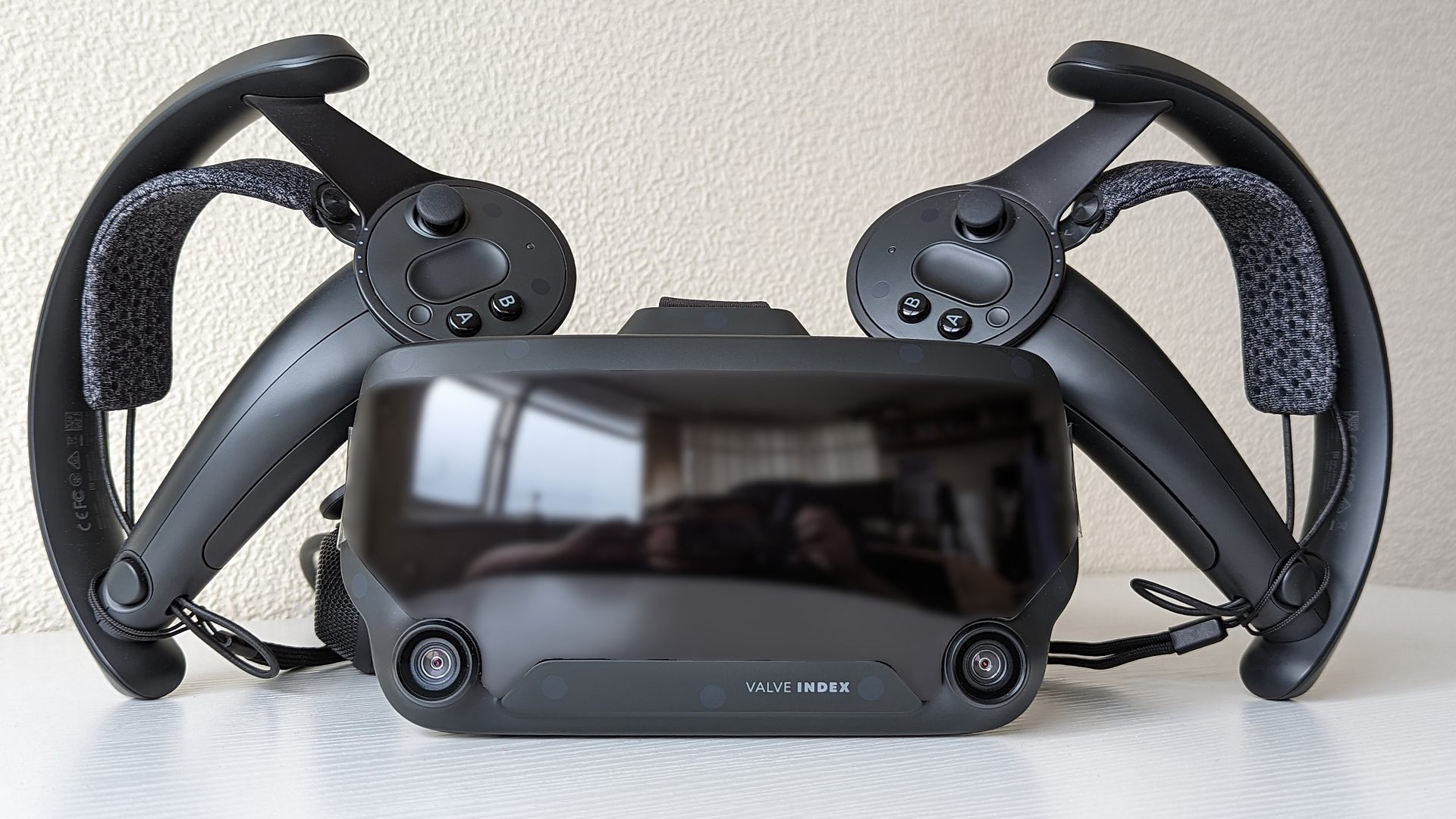The best VR headset will take your gaming PC setup to the next level, especially if you’re looking to play games like Half-Life: Alyx, Beat Saber, and Resident Evil 4. Sure, today’s virtual reality tech is more Lawnmower Man than Ready Player One, but concepts like the metaverse and augmented reality (AR) are all seemingly a part of what’s to come.
Choosing the best VR headset isn’t necessarily complicated, but companies like Meta and Valve are continuously reinventing the concept of virtual reality. Each headset will provide the best VR games on PC with a different flavor of immersion, and the most expensive option isn’t necessarily the best. So, to help you get on your virtual feet, we’ve tested a bunch of VR headsets in an attempt to make the murky waters of the metaverse a little clearer.
Here are the best VR headset options:
- Meta Quest 3 – our favorite VR headset
- Pico 4 – a great Meta Quest 2 alternative
- Bnext VR headset – a cheap VR headset
- Valve Index – the top Steam VR headset
- HTC Vive Pro 2 – boasts a brilliant screen
- HTC Vive Cosmos – made for modders
- HP Reverb G2 – one of the most comfortable
- Meta Quest Pro – a mixed-reality monster

1. Best VR headset
The best VR headset is the Meta Quest 3. Expect to pay $499 USD / £479.99 GBP for the 128GB model and $649.99 / £619.99 for the 512GB model.
Pros:
- Fully wireless headset and controllers
- Quality built-in speakers
- Easy setup
- Vastly improved resolution and performance over the previous model
Cons:
- Now more expensive
- Requires a Meta account
| Meta Quest 3 specs | |
| Screen | 2064×2208 per eye, pancake lenses |
| Refresh rate | 90Hz /120Hz |
| FoV | 110-degree horizontal, 96-degree vertical |
| Tracking | Inside-out |
There were high hopes for the Meta Quest 3 following big promises made by the Reality Labs team and Mark Zuckerberg, but in a nice surprise, they’re delivered on virtually all of them.
Despite a lack of native software at launch, the Meta Quest 3 can take your existing library of Meta games and give them a substantial performance boost, even without developers providing a full graphical overhaul.
An upgrade in every sense of the word, the Quest 3 is a device that can appeal to the masses given its ease of access, and now it’s over to developers to provide the killer software that people are going to want to buy a headset to play.
Read our Meta Quest 3 review for more.
2. Best standalone VR headset
The best standalone headset is the Pico 4.
Expect to pay around $460 USD / £380 GBP.
| Pico 4 specs | |
| Screen | Single LCD (2160×2160 per eye) |
| Refresh rate | 90Hz |
| FoV | 105° |
| Tracking | Inside-out |
Pros:
- Wireless
- Easy to setup
- Comfortable design
- 4K screen
Cons:
- Not officially available in the US
- Lacks exclusives compared to Quest 2
- Lower refresh rate
It’s hard to discuss Pico 4 without comparing it to Meta Quest 2, though you can understand why. Developed by ByteDance subsidiary Pico, this wireless VR headset is one of the more powerful consumer options currently available.
Utilizing a Qualcomm XR2 processor and Adreno 650 GPU, the Pico 4 boasts 4K resolution on an LCD screen, 105°field-of-view, and 8GB of RAM. Unfortunately, Pico 4 only has a 90Hz maximum refresh rate, whereas many others can hit 120Hz. But when it comes to standalone VR headsets, it still holds the performance advantage. For example, Red Matter 2 on Pico 4 has a 30% resolution boost over its Quest 2 edition.
Unfortunately, what’s currently letting down Pico 4 is its software library. If you’re mainly here for games, almost everything you’ll find is already on Quest 2. Meta has cultivated some fine exclusives that you won’t find here, like The Climb 2 and Resident Evil 4 VR. Right now, Pico 4 only has one major exclusive, which includes Ubisoft’s upcoming Just Dance VR.
Still, Pico 4 has other advantages. Thanks to a more even weight distribution, it feels more comfortable than Quest 2’s front-heavy approach. By utilizing inside-out tracking, setting this up proves easy and doesn’t require base stations, like many PC-only headsets. Better still, if you’ve got a spare USB-C cable going, Pico’s latest headset can play PC VR games too, opening up your library further.
3. Best cheap VR Headset
The best cheap VR headset is the Bnext VR headset.
Expect to pay $22 USD / £28 GBP.
| Bnext specs | |
| Screen | Single LCD (1832×1920 per eye) |
| Refresh rate | 120Hz |
| FoV | 90° |
| Tracking | Inside-out |
Pros:
- Cheap and cheerful
- Great gateway VR device
- Doubles up as a drone accessory
Cons:
- A limited selection of games
- Relies on a smartphone
- Could do with nose padding
VR is expensive, but cheap headsets like the Bnext are a great place to start. Sure, the budget goggles won’t blow you away with immersive visuals, but they’ll act like a portal to the virtual realm when paired with your smartphone.
Sure, you could pick up a Google Cardboard for a bit less, but for $22 USD, you’ll get a relatively comfortable accessory that almost looks like an Oculus Quest 2. If you’ve got a Drone with virtual reality camera mode, you could also pair it with the Bnext and complete your setup.
Admittedly, the Bnext is more of a VR stepping stone than a headset you’ll use long-term. That said, if you’re looking for something to entertain younger players or a way to watch 3D videos on your smartphone, this headset should tick all the boxes.
The Bnext isn’t entirely uncomfortable, but its nose bridge could do with some additional padding. Not that you’ll be wearing the headset for an extended period, as it’s arguably more a novelty taster than a full-blown experience. Nevertheless, while it’s still a bargain, you might want to consider your schnozzle before sticking it on your face.
4. Best VR headset
The best Steam VR headset is the Valve Index.
Expect to pay $999 USD / £919 GBP.
| Valve Index specs | |
| Screen | Dual 1440 x 1600 LCD |
| Refresh rate | Up to 144Hz |
| FoV | 130° |
| Tracking | Steam VR base stations |
Pros:
- Fantastic audio
- Knuckles controller
- Minimal screen door
- Accurate tracking
Cons:
- Expensive
- Bulky
The Valve Index makes the most compelling argument for high-fidelity, tethered PC VR – provided you’ve got the rig to deal with the workload. And it does so by breaking the mold in a few ways.
The Valve Index’s off-ear speakers – while one of its most questionable features pre-launch – turned out to be one of the headset’s strongest feats. They’re somehow both immersive and comfortably distant from the ear without any sound leakage… witchcraft.
Aside from glorious audio, the Index offers dual 1,440 x 1,600 RGB LCD screens, fitted with a greater number of subpixels than their AMOLED alternatives. They’re also a touch wider when it comes to field of view and capable of running at up to 144Hz, rivaling the best gaming monitor.
The end result is a display with greater sharpness, clarity, and eye comfort for longer periods. And its controllers are seriously the best ones out there. The Index truly is the definitive device for virtual reality on Steam.
Read the PCGamesN Valve Index review for our full verdict and score.

5. Best VR headset screen
The best VR headset screen is the HTC Vive Pro 2.
Expect to pay $1,250 USD / £1,400 GBP.
| HTC Vive Pro 2 | |
| Screen | Single LCD (2488×2488 per eye) |
| Refresh rate | 120Hz |
| FoV | 120° |
| Tracking | Inside-out |
Pros:
- High-fidelity screen
- 120-degree field of view
- Easy setup
- 120Hz refresh rate
Cons:
- Premium price
- Requires additional base station
Looking for a premium VR experience? HTC’s Vive Pro 2 should scratch your immersion itch. HTC’s latest release has one of the most impressive screens on the market, with a native resolution of 2,448 x 2,448 pixels per eye, meaning it can provide a high-fidelity viewing experience that puts even some gaming monitors to shame.
The HTC Vive Pro 2’s screen also runs at 120Hz and features a 120-degree field of view, so you might need to routinely conduct a reality check while wearing this headset.
The Vive Pro 2 is admittedly pricey, especially compared to some of the other headsets on this list, but if you’re serious about VR gaming, this headset will likely tick all the boxes.
If you already own HTC’s previous headset, you’ll be able to pick up the Vive Pro 2 on its own. However, if you’re new to the VR fold, you’ll need to pick up a pair of first-generation controllers and a set of Base Station 2.0’s.

6. Best VR headset for modding
The best VR headset for modding is the HTC Vive Cosmos.
Expect to pay $749 USD / £699 GBP.
| HTC Vive Cosmos specs | |
| Screen | Dual 1440 x 1700 RGB LCD |
| Refresh rate | 90Hz |
| FoV | 110° |
| Tracking | Inside-out |
Pros:
- Modular
- Inside-out tracking
- High resolution
- Compatible with Vive accessories
Cons:
- No standalone mode
- High price
The HTC Vive Cosmos fits snugly between the Oculus Rift S and the Valve Index. While costly, you receive the best that HTC, originators of the almighty Vive, is able to offer, truly completing the best gaming PC setup money can buy.
The Cosmos comes equipped with inside-out tracking, a whopping 2880 x 1700 resolution across new LCD panels, and new and improved ergonomics to keep the headset stable and comfortable. Undeniable heavy hitter headset specs, but a lack of standalone mode means you’ll need to pair it with a capable rig.
The new controllers are a redesign of the original Vive, and many of the extra add-ons for the original kit can also be reused with the Cosmos. Wireless connectivity powered by Intel WiGig, Lighthouse tracking support, and Vive Tracker support is all set for imminent rollout on the new and improved Vive.
Price isn’t on HTC’s side, and similar headsets could arrive with a more competitive MSRP in the future. That said, even lofty tags can’t strip the device of its strengths, and the Vive Cosmos is a fierce addition to this list.
7. Best VR headset for comfort
The best VR headset for comfort is HP Reverb G2.
Expect to pay $599 USD / £530 GBP.
| HP Reverb G2 specs | |
| Screen | Dual 2160 x 2160 LCD |
| Refresh rate | 90Hz |
| FoV | 114° |
| Tracking | Inside-out |
Pros:
- Emphasis on comfort
- Impressive resolution
- 90Hz refresh rate
Cons:
- Controllers aren’t the best
- Messy cable setup
Created in collaboration with Microsoft and Valve, the HP Reverb G2 is a VR headset with comfort at its core. Its flexible material adjusts to fit the user’s face, meaning you can stay within your favourite virtual world for longer. You can also adjust the headset’s lenses for different eye distances, which should help prevent eye strain.
The Reverb G2 also blows punches with some of the more lavish headsets on this list, with 2160 x 2160 resolution per eye that almost matches the HTC Vive Pro 2. It also serves as a good step up from the Oculus Quest 2, thanks to its 114-degree field of view.
In terms of price, the Reverb G2 sits between the Quest 2 and HTC Vive Cosmos. That’s not necessarily a bad thing, especially since its specs are a force to be reckoned with. However, HP isn’t a brand intrinsically tied to virtual reality, so there’s a chance to-be enthusiasts won’t notice the tech giant’s offering.
If you’re looking for a reliable headset with neat specs and solid construction, the Reverb H2 won’t disappoint. Naturally, if you’re looking for ultra-precise tracking, you’ll need to invest in something like the Meta Quest Pro. Otherwise, HP’s face contraption should check most of your VR gaming boxes.
8. Best mixed reality headset
The best mixed reality headset is Meta Quest Pro.
Expect to pay $1,000 USD / £1,000 GBP.
| Meta Quest Pro specs | |
| Screen | Dual 1800 x 1920 |
| Refresh rate | 90Hz |
| FoV | 120° |
| Tracking | SLAM |
Pros:
- Cutting edge specs
- Great AR capabilities
- Pancake lenses
Cons:
- Ridiculously expensive
- Isn’t specifically for gaming
Escaping to the virtual realm is one thing, but a mixed-reality headset like the Meta Quest Pro uses AR to change the visual fabric of real life. That might sound a bit whimsical, but the social media giant’s pricey goggles will change the way you engage with VR, whether you’re a fan of the metaverse or not.
At its core, the Meta Quest Pro is everything the Quest 2 is and more, which is great news if you’re a fan of the latter. The premium device wields better front cameras that can deliver color pass-through – an essential if you’re looking for the best augmented reality experience. Its pancake lenses are also 40%, providing much clearer visuals than its cheaper predecessor, and its screen packs more pixels too.
Tracking another Meta Quest Pro biggie, as its controllers are armed with three dedicated cameras. That alone frees up the camera on the headset itself and helps track full-body movement and location more efficiently. The result is a setup that steps well beyond the abilities of other VR headsets.
Would we recommend buying a Meta Quest Pro just to play VR games? Absolutely not, as it’ll set you back an astounding $1,499 USD. For that amount, you could probably invest in one of the best cheap gaming PC builds and an Oculus Quest 2 with change to spare, and it’s going to come with features you won’t necessarily use.
That said, the Quest Pro is still the best AR headset, offering a tremendous mixed-reality experience that could change the way you work and socially interact. If that sounds up your alley, Meta’s eye-watering price tag might seem like a reasonable investment, and at the end of the day, you’ll still be able to play BeatSaber and other VR bangers.
How we pick the best VR headsets
First and foremost, we want to draw on personal experiences with each headset that we select for this list. Where that isn’t possible we turn to the technical specs and freely available information pertaining to the ability of each headset.
VR is a niche hobby, but it’s getting much more popular, so we’ve tried to pick a headset for every type of player depending on how you choose to interact with VR. We consider budgets, but ultimately the hardware involved is always pricey.
Does VR cause sickness and headaches?
Yes, virtual realist gaming, if not approached with caution, can lead to nausea and headaches. If you’re new to the hobby, you’ll need to train your brain to adjust to how it feels to be fully immersed.
However, the quality of the headset can do a lot to negate these feelings. The hugely improved display and refresh rate in the Meta Quest 3 promote a smooth image quality at all times and prevents feelings of sickness.
Is VR bad for your eyes?
No, there is no proof that using a VR headset is going to do harm to your eyesight. While it cannot damage eyes, VR headsets will always come with an age restriction as they are not to be used by small children who are still developing.
Beyond this, the reality is that VR is likely no better or worse for your eyes than staring at a computer monitor for eight hours a day.
The Meta Quest 3 is our choice for best VR headset, so if you’re picking one up we can get you started with the best Meta Quest 3 games, and the best free Meta Quest 3 games so you’re not short on ideas for what to play.





